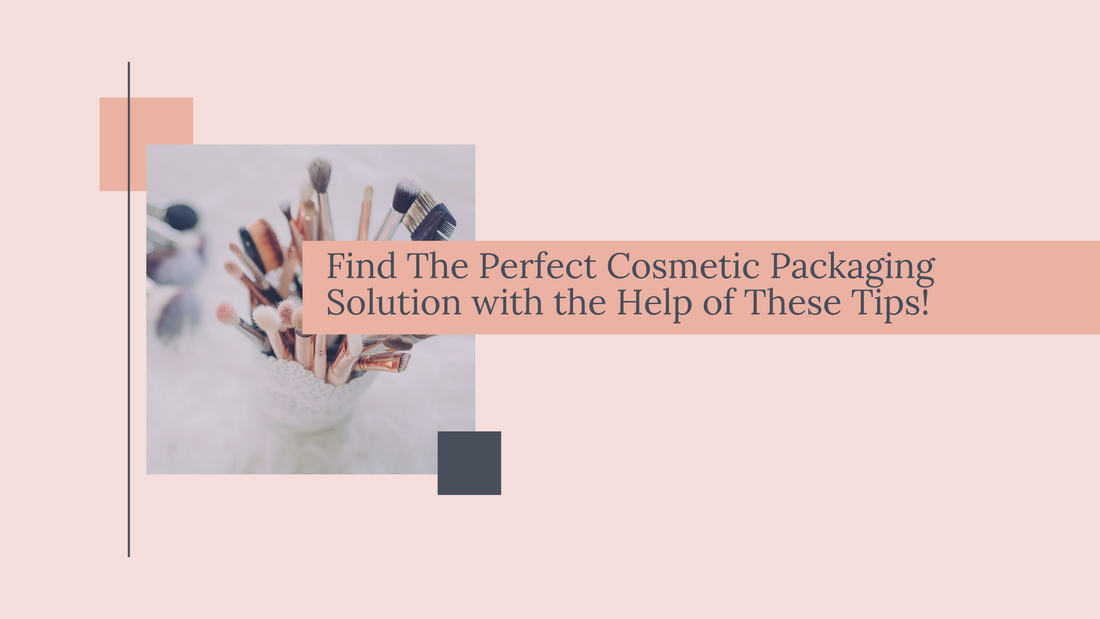Introduction: What are the Different Types of Cosmetic Packagings?
Makeup is a huge part of the cosmetic industry and it has a profound influence on how people perceive themselves.
Cosmetic packaging should be designed to make the product more attractive, easier to use, and also help in marketing the product. Cosmetic packages come in various shapes and sizes that are aesthetically different from one another.
There are three main types that you can choose from: bottle style packaging, lipstick style packaging, and roll on or pot style packaging.
What Cosmetic Packaging Size is Best for Your Products?
The cosmetic industry has grown exponentially in the past few years. There are a number of factors to take into account when choosing the size of packaging for your product.
The first factor is the type of product that's going to be housed inside. Is it in liquid, gel or powder form? If it's a powder, you may want a large jar because you'll need to dip your brush inside and swirl it around before applying makeup. If this is not the case, then you may want to choose a smaller jar, since powders are less messy than liquids.
If the products are liquids or gels, then the appropriate size will depend on what type of packaging closures you have chosen for your products. For example, if your product contains alcohol and needs sealant caps with liners, then you'll need more space for these caps than if you're using pump bottles with droppers as closures.
What Type of Design Do You Want For Your Product Packaging?
Designing packaging is as important as what you put inside the package. Consumers will judge your product by the way it looks. The design of the package can also help companies to promote their products to the customers.
There are different types of designs for cosmetic packages, such as boxes, tins and jars. It depends largely on what you want to convey about your product and how it would be used.
To choose which packaging design is best for your product you need to answer these questions:
1) What type of product is it?
2) What do you want to communicate about this product?
3) How will this product be used?
4) What are the size constraints?
How to Find the Perfect Supplier For Your Personal Needs?
A personal care products supplier is a business that supplies personal care items to wholesalers and retailers. Personal care product suppliers can be in the form of an individual, an individual with a retail store, or a company that specializes in supplying only these items.
A customer can ask for packaging design, labels, and brand development too. The most common types of products offered by customer suppliers are: skin care, bath and body products, lip balms, lotions, body butters and oils.
The cosmetics packaging industry is one of the most competitive industries in the world. There are a lot of suppliers and manufacturers that offer their services to customers. So how do you find the perfect supplier for your personal needs?
There are a few things that you should consider before you start looking for your supplier. First, decide what kind of product you want to buy. Second, decide what kind of packaging you want to use for your product. Third, decide on the quantity that you need and fourth, make sure that they have a good reputation in the industry.
Conclusion: An In-Depth Look At The Importance Of Top Quality & Effective Cosmetic Packages
Packaging is the final touch to a product and can make or break how customers perceive the company. The importance of this element in marketing cannot be stressed enough; it has been proven to increase customer retention rates by over 30%.
The cosmetic industry is constantly looking for new ways to stand out from an increasingly competitive market. In recent years, we have seen an influx of new packaging styles, features and designs that are changing what consumers expect from cosmetics packaging. One area where innovation has really taken off is non-essential packaging. This type of packaging usually isn't needed for the product’s integrity but it makes a big difference with customer engagement levels and marketing efforts.

